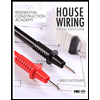A schematic of the branched pipes is shown in Figure 3. Unit 1 requires a pump placed in line to maintain the pressure of the feed water tank at 150 kPa. Unit 2 does not require a pump since it is located at a lower level than the main storage pool, and the tank in this unit incorporates a floating lid on top to maintain the pressure at 120 kPa. The volumetric flow rate of water discharging from the main storage pool is Q = 0.1 m3/s. See diagram for details and information The pipelines are denoted 0, 1, or 2, indicating the main line (pool to Point J), the length of pipe associated with Unit 1 (joint J to tank 1), and the length of pipe associated with Unit 2 (joint J to tank 2), respectively. Using the information provided, determine the volumetric flow rate of water, Q [m3/s] in the pipelines, the required pump head, hP [m], and the power required to drive the motor of the pump assuming a mechanical efficiency of 61%. • For the friction factors required in the solution process, use the Colebrook-White equation reported below (e is the absolute roughness of the pipe, D is the inner diameter, Re is Reynolds Number, and f is Darcy friction factor): Consider the major and minor frictional losses associated with the pipe, elbows, and valves as shown in the schematic diagram. The number of elbows in unit 1 is 3. Do not consider the friction loss of contraction and entry. State all other assumptions made in the solution process.
A schematic of the branched pipes is shown in Figure 3. Unit 1 requires a pump placed in line to maintain the pressure of the feed water tank at 150 kPa. Unit 2 does not require a pump since it is located at a lower level than the main storage pool, and the tank in this unit incorporates a floating lid on top to maintain the pressure at 120 kPa. The volumetric flow rate of water discharging from the main storage pool is Q = 0.1 m3/s.
See diagram for details and information
The pipelines are denoted 0, 1, or 2, indicating the main line (pool to Point J), the length of pipe associated with Unit 1 (joint J to tank 1), and the length of pipe associated with Unit 2 (joint J to tank 2), respectively.
Using the information provided, determine the volumetric flow rate of water, Q [m3/s] in the pipelines, the required pump head, hP [m], and the power required to drive the motor of the pump assuming a
• For the friction factors required in the solution process, use the Colebrook-White equation reported below (e is the absolute roughness of the pipe, D is the inner diameter, Re is Reynolds Number, and f is Darcy friction factor):
Consider the major and minor frictional losses associated with the pipe, elbows, and valves as shown in the schematic diagram. The number of elbows in unit 1 is 3. Do not consider the friction loss of contraction and entry. State all other assumptions made in the solution process.


Step by step
Solved in 7 steps with 8 images


